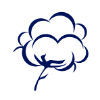 COTTON HARVEST
COTTON HARVEST
Cotton plants average height is one hundred twenty centimetres. Planting occurs between October and December, harvesting between March and June. Cotton flowers are a pale-yellow colour, can reach a diameter of five centimetres and require about seventy days to grow. Cotton is cultivated in particular areas of the world: its growth requires specific humidity and temperatures. Cotton fibres are classified according to their colour, their brightness and their softness. Moreover, cotton is also classified for fibres length. In fact, the longer the fibres, the thinner the yarn, essential requirement in shirting.
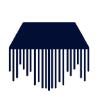 SPINNING
SPINNING
From 60/1 to 300/2, going through 80/1 compact : the choice among the best yarns is a crucial moment, then for this reason we only purchase the best cottons in the world, both in quality and innovation terms. We pay high attention to the proper spinning phase, because only a precise combing and torsion can create those paramount yarns able to give us the best color appeal, the perfect quality of white and a particular pleasantness of touch. The yarns purchased are electronically checked in order to eliminate all imperfections and contaminations and they are made ready for the yarn dyeing phase.
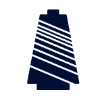 YARN DYEING PHASE
YARN DYEING PHASE
The cones are dyed in the selected colors, with machineries able to support the different yarns quantities and, once dyed, they are carefully checked in order to verify the correct shade.





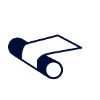 WARPING AND WEAVING
WARPING AND WEAVING
Since ever, we perform with the most precise attention and the highest mastery the warping phase, which is needed to make the yarns parallel and put them on the beam: we believe that this is a crucial point in order to make later on a flawless weaving. We use warping machines selected among the state of the art devices, but also warping machines for short meters, called drum sample warping machines.
The weaving is the art of building a fabric: it is the result of mixing of warp yarns with weft yarns. We use more than one hundred and ten proprietary looms, all cutting edge generation, besides those belonging to our own historical partners. They are rapier looms and jacquard looms, in order to allow us to meet the uttermost level of market complexity. Since ever, we melt tradition and modernity, thanks to the use of highly technological machines and highly qualified personnel; we also have conscientious procedures aimed to complete a rigorous control of each single meter of grey fabric before it gets through the finishing.
 FINISHING
FINISHING
Just like weaving is the hearth of fabrics, finishing is its soul! Through the finishing, indeed, personality and shine are added to the fabric. This result is reached with the bleaching and mercerizing, with the first process it is reached the desired shade of white, while the second modifies the cotton particle, giving it its own special shine. Beside all this, we make all those operations that can be done on a fabric in order to improve its appearance, its touch and its characteristics. These phases, called, finishing, can be for example raising, brushing or chintzing; on the base of the need, there are also special easy care or no iron treatments. We believe this to be a very delicate and complex phase, then we have chosen a deep and close collaboration with our finishing in order to assure the best results.
 QUALITY LABORATORY
QUALITY LABORATORY
The latest control is done on the finished fabrics internally by the quality laboratory, given that quality is one of our paramount values.






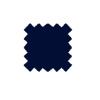 STORAGE
STORAGE
Once the fabrics have been checked, they are totally automatically packed . Fabrics are now sent to the warehouse. Every single fabric is identified by a label where, among various information, such as article name and meters length, a univocal alphanumeric code is printed. When a fabrics is purchased, the warehouseman takes it off from the shelf and, with a palmtop, verifies that the right item has been selected. This system guarantees the delivery of the correct fabric to the client and an efficient warehouse management.
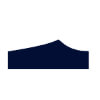 SHIPPING
SHIPPING
Once the needed fabric has been selected, the meters ordered are cut. To make sure that the measurement is correct and to guarantee an high-quality service, the beginning and the end of fabrics are stamped , namely both extremes and the number of meters is automatically counted. The measured fabric is labelled and boxed. Next phase is then delivery.
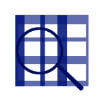 STYLE RESEARCH
STYLE RESEARCH
Trend research is the first step to evaluate the street to go, which yarns to select, which colors to choose, for which graphics and for which constructions. A research which goes beyond fashion, because it looks at the world all over around: with an expert eye we watch the catwalks, but also shops and small open markets; we observe cool hunters and the most popular blogs, but also common people; we study the different innovations and tendencies also in art, cooking, cinema….in one word, only a particular sensibility for this all allows us to draw the guidelines of our collections.
We study the structure of new fabrics, we design the graphics of different articles and we create the colors shades. All this not only for the seasonal collections, but also and foremost for the exclusives of single clients; a team working involving our style department, the sales force and the designers of the fashion brands and maison, which allow the making of original fabrics, studied especially for them.
 SPECIAL MANUFACTURING
SPECIAL MANUFACTURING
Since several years we have broadened our offer, studying special fabrics, such as velvets, air-tex, jersey, piquet or plissè, which require specific manufacturing and finishing. We also have printed and coated fabrics, which are specifically prepared during the finishing phase to undergo the next manufacturing process. More precisely, the printing can be traditional printing (with cylinders), including etching “lexus” as well, in order to have the shirting classic designs, or inkjet, for the most complex and colored graphics. We study all over designs, but also engineered or pannels on the base of the different requirements. Last but not least, we can arrange traditional printing and discharge printing, and pigment printing as well, in order to have double effects that gives a very particular characteristics.




All the models have been made exclusively for us and are exhibited at our headquarters in Guanzate and faithfully reproduce the machinery we use in the manufacturing cycle of our fabrics.

